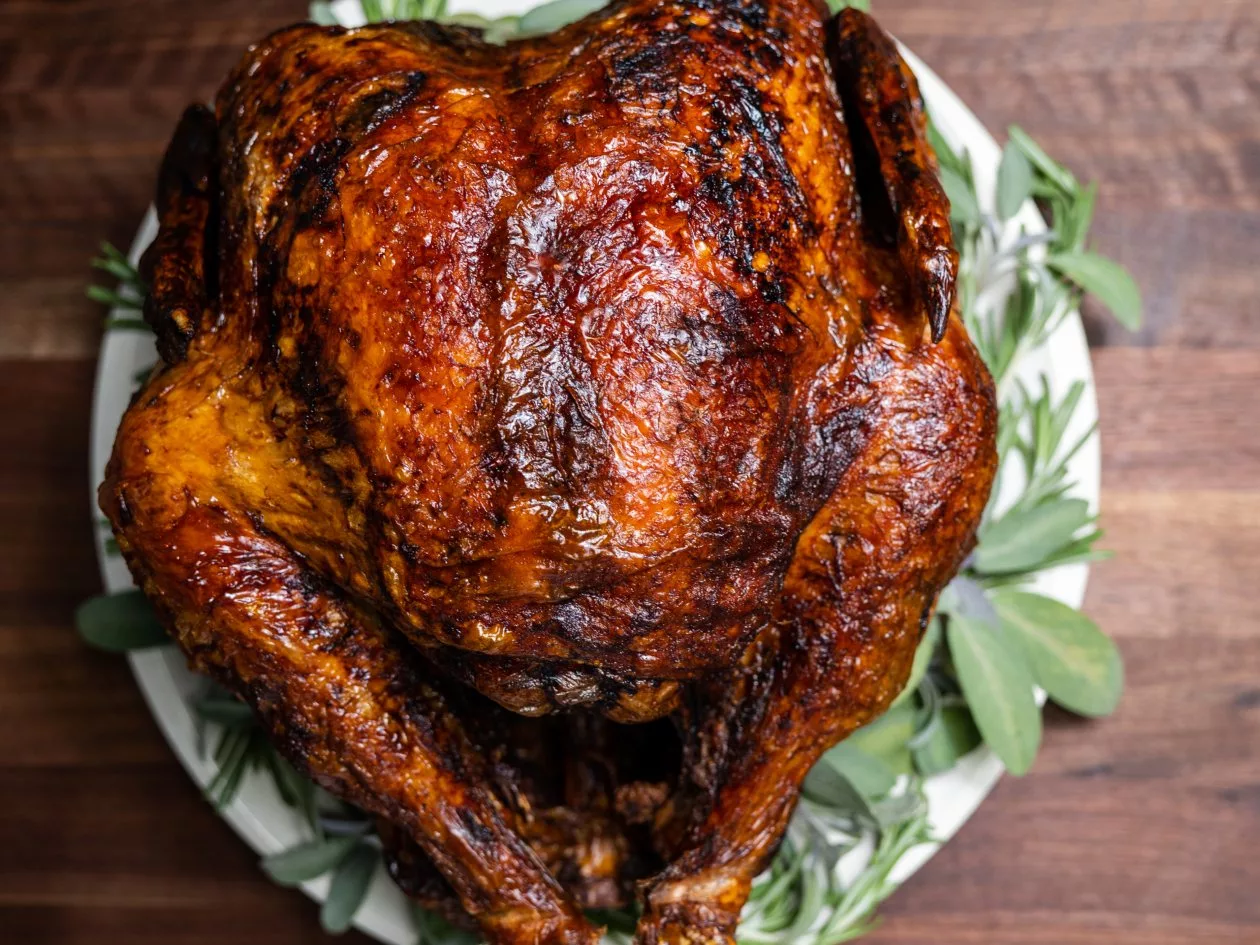Frying a turkey is a popular cooking method, especially during festive seasons like Thanksgiving. It offers a unique and delicious result: crispy skin on the outside and juicy, flavorful meat on the inside. However, while the end product may be mouthwatering, frying a turkey comes with significant risks. Each year, numerous accidents are reported involving turkey fryers, ranging from minor burns to devastating house fires. So why is frying a turkey so dangerous? In this comprehensive article, we will explore the science behind deep-frying, the specific risks associated with turkey fryers, and the steps you can take to ensure safety if you decide to tackle this culinary endeavor.
The Science Behind Deep-Frying
To understand the dangers of frying a turkey, it’s important to first grasp the science of deep-frying. This cooking method involves submerging food in hot oil, typically heated to temperatures of 325–375°F (163–190°C). When food is introduced to the hot oil, water within the food rapidly converts to steam. This steam creates bubbles, which rise to the surface, allowing the oil to crisp the exterior while cooking the interior.
While deep-frying works well for smaller items like chicken wings or fries, frying a turkey poses unique challenges due to its size, the volume of oil required, and the equipment typically used. Any mishap—such as introducing a partially thawed turkey to hot oil or overfilling the fryer—can cause the process to become dangerous very quickly.
Why Frying a Turkey Is So Dangerous
1. The Risk of Oil Spills and Overflows
One of the most significant dangers of frying a turkey is the risk of oil spilling or overflowing from the fryer. A turkey fryer typically requires several gallons of oil to submerge the bird completely. If the fryer is overfilled, the displacement caused by the turkey can lead to hot oil spilling over the sides of the pot.
When hot oil comes into contact with the burner or heating element, it can ignite instantly, creating a massive fire. Even a small amount of spilled oil can cause a flare-up, as oil is highly flammable. These accidents are often exacerbated by the large volume of oil used, making it difficult to control the flames.
2. Introducing a Partially Thawed Turkey
Another common hazard involves frying a turkey that is not fully thawed. Frozen or partially frozen turkeys contain ice crystals, and when these come into contact with hot oil, they rapidly turn into steam. This causes a violent reaction where the oil bubbles, spatters, and sometimes erupts from the pot.
The sudden displacement of oil can lead to severe burns, fires, and damage to property. Many accidents occur because people underestimate the time needed to thaw a turkey fully. A frozen turkey can take several days to thaw safely in a refrigerator, but rushing this process can result in catastrophic consequences.
3. High Temperatures of Cooking Oil
The oil used for frying must be heated to around 350°F (175°C), which is dangerously close to its smoke point—the temperature at which oil begins to break down and release flammable vapors. If the oil is overheated, it can ignite spontaneously, resulting in a grease fire.
Unlike other types of fires, grease fires are notoriously difficult to extinguish. Water cannot be used to douse a grease fire, as it reacts violently with the oil, causing the flames to spread. Instead, a grease fire requires a fire extinguisher rated for Class B fires or smothering with a lid or baking soda, which many people are unprepared for during an emergency.
4. Unstable Equipment
Most turkey fryers are designed as tall, narrow pots placed on a propane burner or stand. This design is inherently unstable, especially when dealing with a large bird and several gallons of oil. A slight nudge or uneven surface can cause the fryer to tip over, spilling hot oil and potentially starting a fire.
The instability of turkey fryers is a major reason why fire safety organizations, such as the National Fire Protection Association (NFPA), advise against their use. Cooking outdoors, especially in windy or uneven conditions, can further increase the likelihood of accidents.
5. Lack of Safety Features
Unlike indoor deep fryers, many outdoor turkey fryers lack basic safety features such as automatic shutoff mechanisms, temperature controls, or lids. Without these features, it’s easy for oil to overheat or for the cooking process to spiral out of control.
Many turkey fryers also lack insulation, making the exterior of the pot extremely hot to the touch. This increases the risk of burns, especially in crowded areas where children or pets might inadvertently come into contact with the equipment.
6. Open Flames and Propane Tanks
Frying a turkey outdoors typically involves using a propane-powered burner. Propane is a highly flammable gas, and its use introduces additional risks. A propane tank that is not properly connected or placed too close to the fryer can ignite, causing an explosion.
Additionally, the open flame of the burner is directly exposed to the elements, making it susceptible to wind or accidental fuel spills. These factors can quickly turn a simple cooking process into a dangerous situation.
Common Scenarios Leading to Turkey Fryer Accidents
1. Overconfidence and Lack of Preparation
Many accidents occur because people underestimate the complexity and risks involved in frying a turkey. Skipping safety precautions, using the wrong equipment, or failing to plan properly can lead to dangerous situations.
2. Crowded Cooking Areas
Frying a turkey in a crowded space increases the likelihood of accidental bumps or spills. Cooking near flammable structures such as wooden decks, garages, or overhangs is especially dangerous, as even a small fire can spread rapidly.
3. Unattended Fryers
Leaving a fryer unattended is a recipe for disaster. Oil heats up quickly and can reach dangerous temperatures in a matter of minutes. If not monitored, it can ignite or overflow without warning.
How to Safely Fry a Turkey
Frying a turkey can be a delicious way to prepare your holiday centerpiece, but it comes with inherent risks. Proper preparation and safety measures can greatly reduce the chances of accidents, ensuring a successful cooking experience. Here’s a step-by-step guide to frying a turkey safely:
1. Choose the Right Location
Always fry your turkey outdoors in a well-ventilated, open area. Keep the fryer at least 10–15 feet away from any flammable structures such as wooden decks, garages, or the sides of your home. Avoid placing the fryer under overhanging roofs, low-hanging tree branches, or in areas with dry grass that could ignite.
Choose a flat, stable surface for your fryer, like concrete or a level patio, to minimize the risk of tipping. Uneven ground can cause the oil to slosh or spill, increasing the danger of a fire. Additionally, keep the cooking area free of clutter, pets, and children to prevent accidental bumps or spills.
2. Thaw Your Turkey Completely
A frozen or partially thawed turkey can cause a catastrophic reaction when it meets hot oil. Ice or water inside the bird rapidly turns to steam upon contact with oil, leading to violent bubbling, splashing, or even an eruption of hot oil from the fryer.
To avoid this, ensure your turkey is completely thawed before frying. Plan ahead, allowing approximately 24 hours of thawing time in the refrigerator for every 5 pounds of turkey. For instance, a 15-pound turkey will need at least three full days to thaw safely in the fridge. If you’re unsure whether the turkey is fully thawed, check inside the cavity for ice crystals before proceeding.
3. Measure the Oil Level
Determining the correct amount of oil is crucial to preventing overflows when frying a turkey. Before adding oil, place the turkey in the fryer pot and fill it with water until the bird is completely submerged. Remove the turkey and mark the waterline; this will indicate the proper oil level.
After marking the waterline, empty and thoroughly dry the pot and the turkey. Water and oil do not mix, and any residual moisture can cause dangerous splattering. When you’re ready to fry, fill the pot with oil up to the marked line, ensuring there’s enough space for the turkey to be submerged without spilling over.
4. Monitor the Oil Temperature
Maintaining the correct oil temperature is critical for both safety and cooking success. Use a deep-fry thermometer to monitor the oil, keeping it between 325–375°F (163–190°C). Heating the oil beyond its smoke point can produce flammable vapors, increasing the risk of a grease fire.
Never leave the fryer unattended while the oil is heating. It can reach dangerous temperatures quickly, and without constant monitoring, the risk of overheating rises significantly. If the oil begins to smoke, turn off the burner immediately and allow it to cool before proceeding. Maintaining a consistent temperature also ensures the turkey cooks evenly and retains its juicy texture.
5. Lower the Turkey Slowly
Carefully lowering the turkey into the hot oil is one of the most critical steps in the frying process. Rapid immersion can cause the oil to bubble violently, leading to splashes, spills, or burns. Use a specialized hook or basket designed for turkey fryers to lower the bird into the pot.
Wear heat-resistant gloves and long sleeves to protect yourself from hot oil splashes. Lower the turkey slowly and steadily, pausing if you notice the oil bubbling excessively. Once the turkey is fully submerged, ensure it remains stable in the fryer without touching the sides or bottom of the pot.
6. Have Safety Equipment on Hand
Even with careful preparation, accidents can happen, so it’s essential to have the right safety equipment nearby. A Class B fire extinguisher, designed specifically for flammable liquids like oil, should be within easy reach at all times. Familiarize yourself with how to use the extinguisher before you begin frying.
Never attempt to extinguish a grease fire with water. Adding water to hot oil will cause an explosive reaction, spreading the flames further. Instead, use baking soda to smother small fires or cover the fryer with a metal lid to cut off the fire’s oxygen supply. Always keep a phone nearby to call emergency services if needed, but make sure it’s far enough away from the cooking area to avoid damage
Conclusion
Frying a turkey can be a delicious and rewarding experience, but it comes with inherent risks that must be taken seriously. The combination of hot oil, open flames, and large cooking equipment creates a potentially dangerous situation, particularly for those who are unprepared.
By understanding the science behind frying, recognizing the risks, and taking proper precautions, you can minimize the dangers and enjoy a safe, flavorful meal. Whether you’re a seasoned turkey fryer or a first-timer, safety should always be your top priority. Remember, a little preparation and caution go a long way in ensuring your holiday feast doesn’t turn into a holiday disaster.




